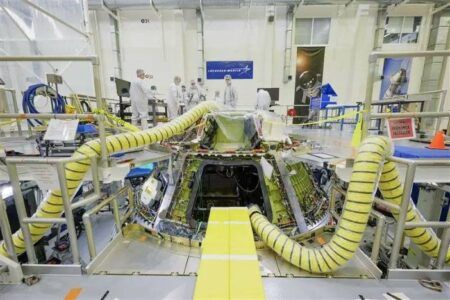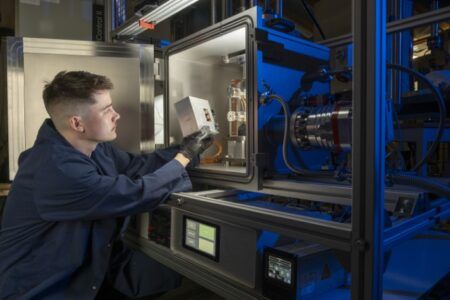A test version of NASA’s Orion spacecraft successfully landed under two main parachutes in the Arizona desert on August 26, 2015, after engineers intentionally failed two different parachutes used in the sequence that stabilizes and slows the spacecraft for landing. At the US Army’s Yuma Proving Ground, engineers tested a failure scenario in which one of the spacecraft’s two drogue parachutes and one of its three main parachutes did not deploy. The test is helping to ensure the parachute system can safely land future astronauts returning from deep space missions even if something with the parachute does not go as planned.
During the test, a C-17 aircraft dropped a representative Orion capsule from its cargo bay at an altitude of 35,000ft, or more than 6.5 miles, in the skies above the US Army Yuma Proving Ground in Yuma, Arizona. The engineering model capsule then began its parachute deployment sequence. The model has a mass similar to that of the Orion capsule being developed for deep space missions, and similar interfaces with its parachute system. Engineers purposefully simulated a failure scenario in which one of the two drogue parachutes, used to slow and stabilize Orion at high altitude, and one of its three main parachutes, used to slow the crew module to landing speed, did not deploy.
“We test Orion’s parachutes to the extremes to ensure we have a safe system for bringing crews back to Earth on future flights, even if something goes wrong,” said CJ Johnson, project manager for Orion’s parachute system. “Orion’s parachute performance is difficult to model with computers, so putting them to the test in the air helps us better evaluate and predict how the system works.”
As part of the test, engineers also evaluated a change to the risers, which connect the parachutes to the vehicle, from steel to a textile material, as well as the use of lighter weight suspension lines for several of the parachutes. Both changes reduce overall mass and volume of the system.
Orion’s parachute system is a critical part of returning future crews who will travel to an asteroid and on toward Mars before returning to Earth in the spacecraft. The first parachutes deploy when the crew module is traveling more than 300mph, and in a matter of minutes, the entire parachute system enables it to touch down in the ocean at about 20mph.
That system is composed of 11 total parachutes that deploy in a precise sequence. Three parachutes pull off Orion’s forward bay cover, which protects the top of the crew module – where the packed parachutes reside – from the heat of re-entry through Earth’s atmosphere. Two drogues then deploy to slow the capsule and steady it. Three pilot parachutes then pull out the three orange and white mains, on which Orion rides for the final approximately 8,000 feet of its descent. Orion’s main parachutes are densely packed and sit on the top part of the spacecraft. Once fully inflated, they could cover almost an entire football field.
During Orion’s flight test in space in 2014, the parachute system performed flawlessly, enabling the spacecraft to descend through the Earth’s atmosphere and splash down in the Pacific Ocean after traveling about 3,600 miles into space.
To see a video of the recent drop test, click here.
Wednesday’s airdrop test was the penultimate evaluation as part of an engineering series before tests begin next year to qualify the parachute system for crewed flights. The qualification series will include eight airdrops over a three-year period that will put the final design through extreme conditions to ensure a safe return for the astronauts.
September 3, 2015




